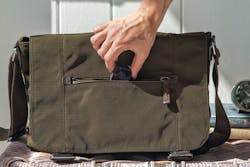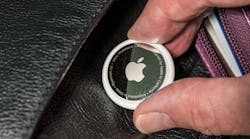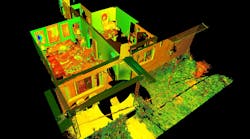Lost And Found
Emergency Tracking and GPS
Around 3am on Monday, May 12, 1986, a group of nineteen people from the Oregon Episcopal School struck out from Timberline Lodge to begin their trek to the top of Mount Hood, an elevation of 11,240 feet. Six turned back early due to illness or exhaustion, while thirteen, three adults and ten teenagers pushed on. This choice would be debated in the school’s conference rooms, the media and the courtroom as this annual trip, part of the school’s wilderness education program offered to its high school sophomores, would end infamously with the death of two adults and seven of the children at about 8,000 feet in a snow cave. Due to this tragedy, a private foundation with help from the Oregon legislature developed a unique portable tracking device, the Mount Hood Locator Unit (MLU). This device along with future developments save public safety personnel time and money when trying to locate vulnerable populations. Most importantly, advances in technology help save lives.
On the mountain
Although it is slowly becoming outdated, the MLU, which was originally designed based on adaptation of animal-tracking technology, continues to be a popular choice for those heading up Mount Hood, the only place where these tracking devices exist. The device can be rented locally and is a radio transmitter designed to signal through snow. It can be picked up many miles away and has batteries that last for weeks. These emergency locator beacons require search and rescue to use radio direction finding (RDF) equipment to provide a bearing for the stranded hikers. One of the downfalls of this technology is it does not initiate a rescue; it only allows rescuers to find someone once an emergency is declared. They require line of sight. They also do not allow for two-way communication. “They don’t send a signal,” explains Jay Chambers, President of Portland Mountain Rescue (PMR), as well as, being on the Technology Committee. “It doesn’t use GPS, it uses radio waves. They are spot locators.” Although MLUs were a great start to tracking, time and technology has moved forward
SPOT/inReach
For individuals who head into the backcountry, whether up a snowy peak or into the desert, Personal Locator Beacons (PLB) and Satellite Positioning and Tracking (SPOT) devices have become common. Both require manual activation, but notify authorities via satellite and provide GPS coordinates. SPOT, a popular choice, is a consumer oriented device utilizing the Globalstar satellite phone network. It offers a Google Maps tracking option as well as the ability to set “All OK” messages which can be sent via text or email. Unfortunately, SPOT signals cannot be pin-pointed and rely on the quality of GPS signal received. Some SPOT units can be paired with a smart phone to allow for two-way text communication. A device similar to SPOT, the inReach is being marketed by DeLorme and quickly becoming the favorite of search and rescue. “Recently, we were down in the Grand Canyon testing,” says Chambers. “We were able to get calls out on a satellite phone and messages out on an inReach every day.” The team also uses these devices to track emergency personnel. “We’ve been using the inReach and SPOTs so command can track us on a map at the command center,” explains Chambers. Although these devices are beneficial to search and rescue, Chambers admits those individuals who utilize them are usually prepared and not generally the population who finds themselves in need of rescue. Fortunately, a device almost everyone carriers has the potential to assist in an emergency.
The common man’s tracker
“At this point, cellphones (are the most successful tracking device),” states Chambers. “The other technology certainly has potential but cells have been most useful.” According to a 2013 Pew Research Center study, ownership of cell phones among adults has reached 91 percent. With legislation mandating companies to include a GPS chip in all new cell phones, as well as, the increase of smartphone applications that allow location-based services, cell phones are increasingly becoming a factor in emergency services. “If you can take the search out of search and rescue, you can save a life,” says Chambers, following up with a story about a guy stranded on a ledge last winter. “He was posting on his phone on Facebook and we got his coordinates based on his picture tags.” When a phone first turns on the GPS coordinates are not always accurate. In this case, the original location identified when he called 911 was not as accurate as the ones that came from posting the pictures. Another section of law enforcement that is using cell phone tracking is 9-1-1.
Tracking 9-1-1
On May 18, 2014, Salem (Mass.) Police Department dispatcher Michael Griffin received a frantic 9-1-1 call from a woman who was screaming for help. Since all cell phones calls to 9-1-1 in this region automatically go to the state police, this was a transfer. “I tried for a minute and a half to get her to tell me where she was or what kind of car she was in,” explains Griffin. “The male was making threats in the background.” Quick-thinking Griffin utilized law enforcement resources, including E911 technology, to establish an estimated location for the vehicle holding the kidnapping victim. He contacted the cell phone company and got subscriber information which he ran through the system netting him a previous domestic violence call which had a license plate associated with it. “During this time, we were continuing to get updates on location from the provider,” says Griffin. “We determined the vehicle type and had an officer right in the area of where the vehicle showed and he pulled them over.” The ability to track a cell phone by GPS is credited with saving this woman’s life. Of course, with current debates on privacy rights, gaining subscriber location information can be tricky. “It depends on the provider,” says Griffin. “They are all a little different.”
Another large metropolitan law enforcement agency agreed stating they have numerous policies and procedures for telecommunications operators to get personal information from cell phone. Even with the paperwork involved, in places like Salem, just the ability to track is priceless. “It’s huge,” says Griffin. “Salem is a big tourist community. Hundreds of thousands of people come in and don’t know where they are. We have a wooded area where people get lost a lot and having GPS cell phone information is huge.” Chambers reminds that there are disadvantages to this technology as well, including inability to track when the phone is turned off or dies and limits in coverage. “If you don’t have cell service,” Chambers says, “you have a paperweight. There is a lot of area where a cell is useless.”
Taking GPS One Step Further
Certain segments of our population always pose a risk of getting lost, needing to be tracked and rescued. “One of the things with people with Alzheimer’s, autism and down syndrome have in common is they can wander and they are not fully communicative,” explains Todd Morris, CEO, BrickHouse Security. “If they wander off they can’t tell someone who they are or where they need to be.” He expounded on this explaining that many veterans are returning from the Middle East with PTSD. “They have episodes where they don’t know where they are,” he explains. 95 percent of the time, they are fine,” he says. “But, every once in a while they become a runner.” Determined to find a solution for families facing these circumstances, BrickHouse created personal tracking devices, such as the popular Spark Nano. Described as “powerful and portable,” this GPS tracker allows subscribers to view a vulnerable person’s whereabouts on their smartphone, tablet or computer. Location alerts can be programmed so if the device goes outside an established geo-fence, a responsible party is notified. “All it takes is one time for a child to go missing and people are worried,” explains Morris. “All it takes is one moment like that and parents realize they don’t want to have that moment again. The demand is coming from caregivers. Sometimes it comes from law enforcement. They realize they have an at-risk population that they are spending a lot of resources tracking down. If they are successful, they get a thank you. If not, it’s bad.” These devices also include a panic button. “If you have someone who has moments of lucidity, they can activate it,” explains Morris. Parents of autistic children also asked that the buttons have the ability to be deactivated. BrickHouse listened and this option is available.
Although peace of mind and safety are the most compelling advantage of personal tracking devices, economic factors also come into play. Utilizing a resource like personal tracking devices makes financial sense. “The average search and retrieval is $20,000 to $80,000,” Morris says. “We have a lot of police departments that will sponsor or pay for our products after they have chased down the same autistic child three times in a row.” Morris indicates departments in several states sponsor devices for their at-risk population.
Whether using PLBs, SPOTs, cell phones or personal trackers, this technology continues to improve, assisting law enforcement in saving time and money. “Anytime a community has people at risk, when they go missing, it affects community,” explains Morris. “No one likes to go through a missing child, or missing elder, anyone in need. They are willing to mobilize to help. It’s never a happy situation. There is always concern, what if it doesn’t end well?” Although many citizens believe tracking devices resemble what they see from Hollywood which doesn’t exist and many law enforcement officers forget assistive technology exists, the reality is somewhere in between which is a blessing for safety and security of vulnerable populations, as well as, those who find themselves in an emergency situation. “I know a lot of people don’t think about it especially when it’s not a call directly to 9-1-1,” explains Griffin about using GPS technology. “Everyone has a cell phone. It’s a tool in your tool bag so you don’t want to forget it’s here. His advice to other public safety professionals: “Think outside the box, use all our tools and do our job successfully.” As tracking technology continues to improve, public safety will continue to have more and more tools and lives will be saved. What more can you ask for?



